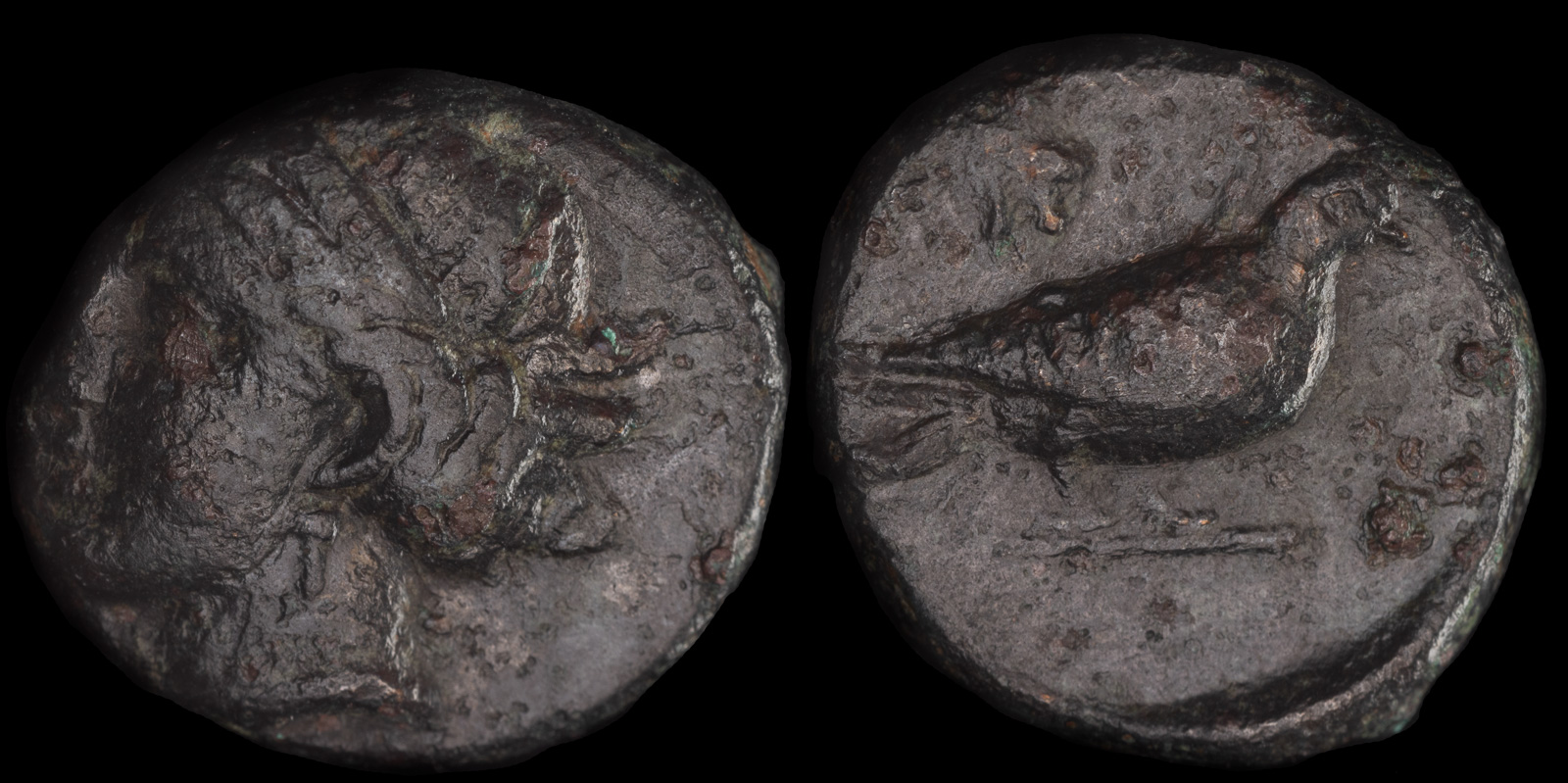Cypriot
View All Tags
The Cypriot syllabary evolved from the Linear B script used by the Mycenaean Greeks and can be traced to the 8th century BCE, following the decline of the Mycenaean civilization and the loss of literacy during the Greek Dark Ages. The Cypriot syllabary consisted of around 50 symbols, each representing a syllable rather than an individual letter or sound. This made it an alphabetic syllabary, where each character represented a consonant-vowel combination, rather than just a single sound like in later alphabetic scripts such as the Phoenician or Greek alphabets. This script was used predominantly for everyday inscriptions, such as dedicatory texts, religious offerings, and official decrees, as well as personal records, such as names and titles.
One of the most significant aspects of the Cypriot syllabary was its widespread use, not only in Cyprus but also in parts of the eastern Mediterranean. As a result of its use on the island, the script helped facilitate cultural exchange between Greek-speaking peoples and Phoenicians, Egyptians, and others in the region. The spread of the Cypriot script indicates the island’s central role in Mediterranean trade and communication. This script was in use during a time of significant cultural transition, marking the shift from the Bronze Age to the Iron Age and the rise of Greek city-states.
While the Cypriot syllabary was used widely, the Cypro-Minoan script represents an earlier form of writing found on the island, which some scholars believe was influenced by the Minoan civilization of Crete. The Cypro-Minoan script appears in inscriptions that date back to the 15th to 12th centuries BCE, during the late Bronze Age. The script is thought to have been used for administrative and trade purposes, but much of it remains undeciphered, leading to debates about its exact nature and the language it may have represented. Despite the challenges in deciphering this script, it is considered an important precursor to the later Cypriot syllabary, indicating that writing on Cyprus has deep historical roots.
The use of the Cypriot syllabary gradually declined around the 4th century BCE, when the Greek alphabet replaced it in official and public writing. This change was likely due to the influence of Greek colonization and the broader adoption of the Greek alphabet as a standard across the Greek world. Nonetheless, the Cypriot script remains an important part of Cyprus’s ancient history, offering valuable insights into the development of writing systems in the ancient Mediterranean.

Echetimos of Paphos
early 4th century BCE
Æ 3.79g, 15mm, 5h
Head of Aphrodite to left wearing stephane /
Dove standing to right; Cypriot letter ‘e’ above; all within concave circle
BMC 48 (uncertain king); Tziambazis 89 (Timocharis); Destrooper-Georgiades, A. “Le monnayage de Paphos au IVe siècle, nouvelles perspectives” in XIII Congreso. (Madrid, 2005), p. 246, fig. 14; Destrooper-Georgiades, A. ‘Paphos sur les monnaies depuis le IVème siècle av. J.-C.’ Studies in Ancient Art and Civilization 17 (2013), pl. 2, 18